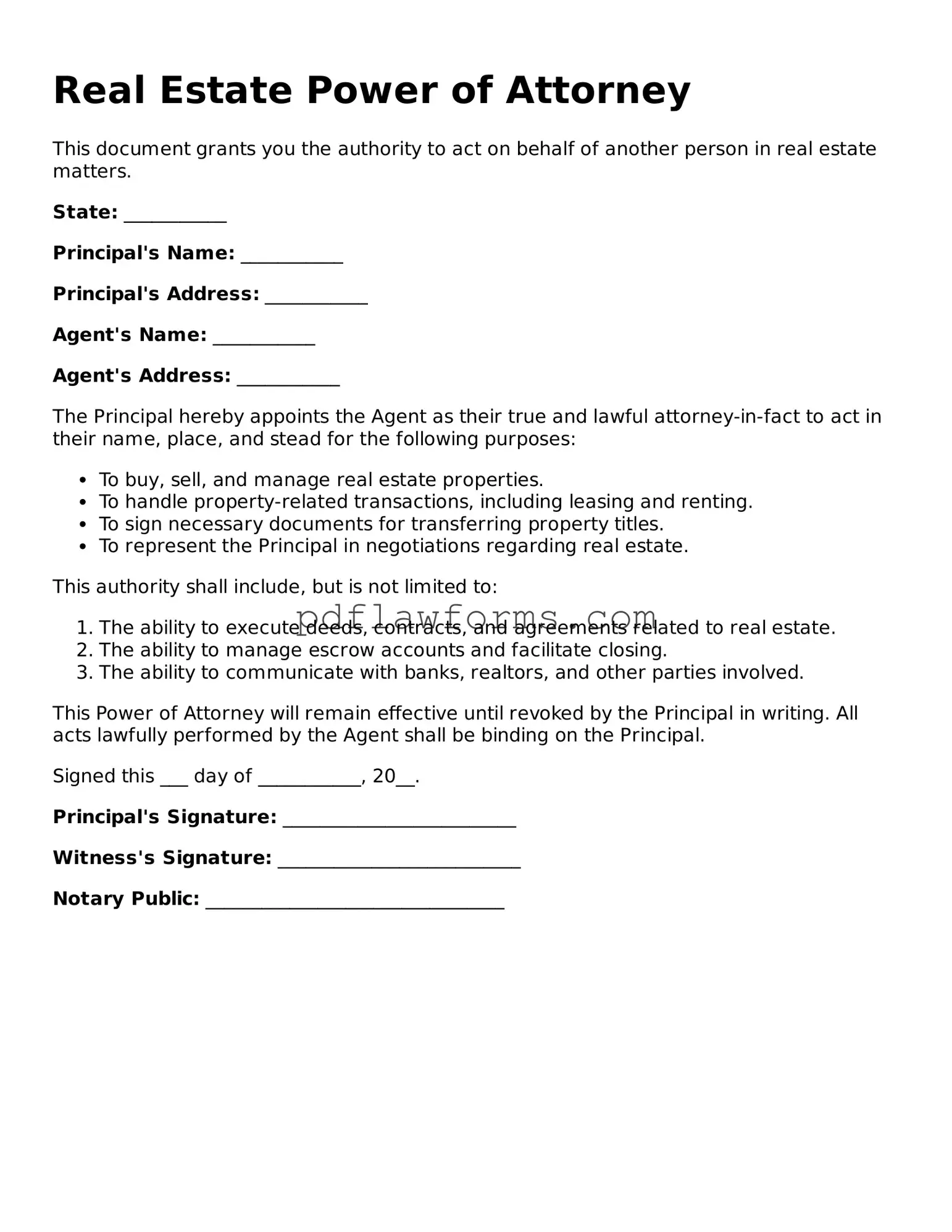Filling out a Real Estate Power of Attorney form can be straightforward, but mistakes can lead to complications. One common error is failing to specify the powers granted. It is essential to clearly outline what the agent can and cannot do. Without this clarity, the agent may not have the authority to act in the intended manner.
Another mistake involves not including the correct names of the principal and the agent. Ensure that both parties' full legal names are used. Abbreviations or nicknames can create confusion and may invalidate the document.
People often overlook the importance of signing the document properly. The principal must sign the form in the presence of a notary public. If the signature is missing or not notarized, the document may not be legally binding.
Additionally, individuals sometimes forget to date the document. A date is crucial for establishing the validity of the Power of Attorney. Without it, there may be questions about when the authority was granted.
Another frequent mistake is neglecting to include any necessary witnesses. Some states require witnesses to sign the form alongside the notary. Omitting this step can lead to challenges in the document's enforceability.
People may also fail to check state-specific requirements. Each state has different laws regarding Power of Attorney forms. Not adhering to these laws can invalidate the document.
In some cases, individuals do not provide clear instructions regarding the duration of the Power of Attorney. It is important to specify whether the authority is durable or non-durable. This distinction affects how the document operates if the principal becomes incapacitated.
Another mistake is using outdated forms. Real Estate Power of Attorney forms can change over time. Always ensure that you are using the most current version to avoid legal issues.
Some may neglect to communicate with their agent about the powers granted. Open communication ensures that both parties understand the responsibilities and limitations involved.
Finally, individuals sometimes forget to keep copies of the completed form. Retaining copies for personal records and providing one to the agent is essential for future reference and clarity.
